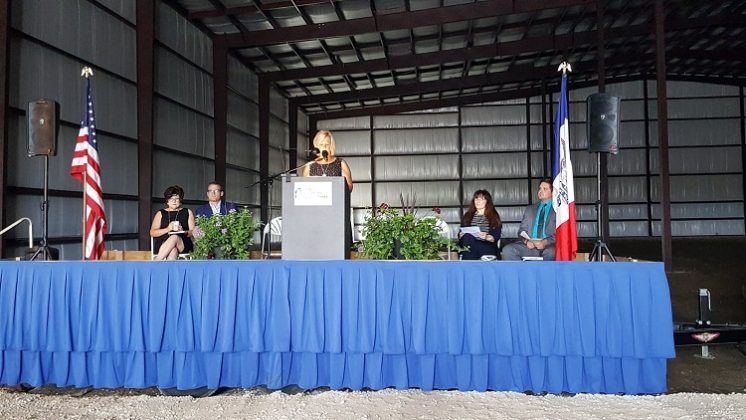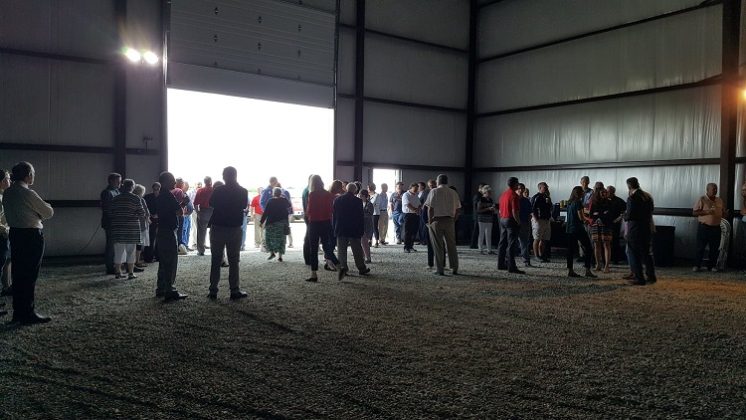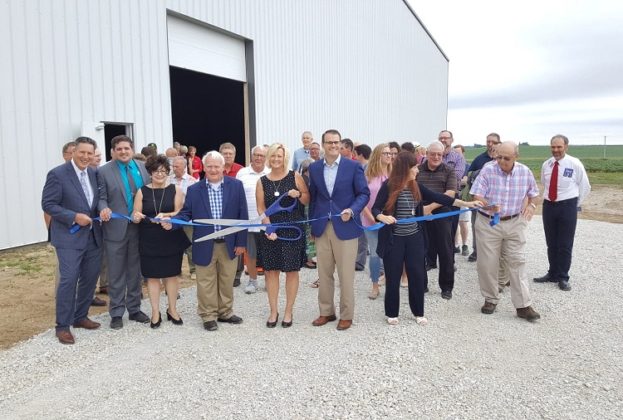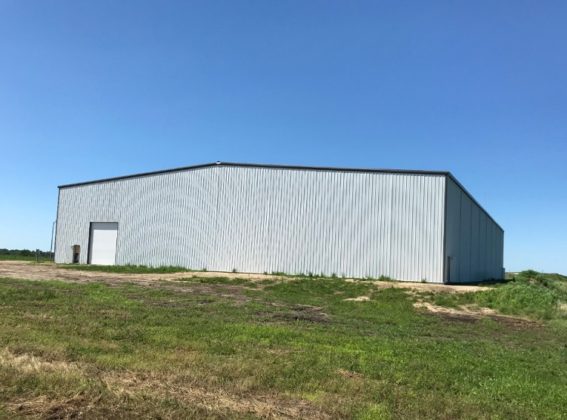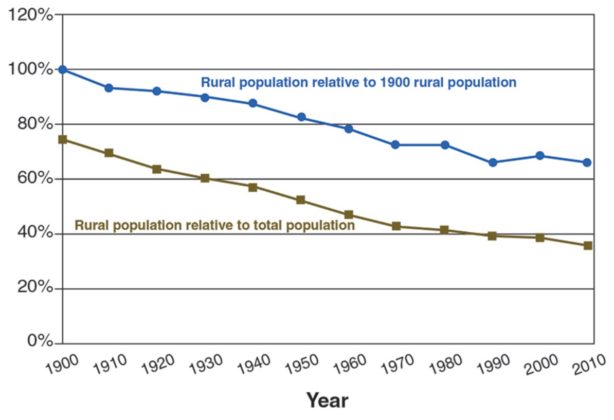Perry pride received a big booster shot Thursday morning when the Perry Economic Development Inc. (PEDI) Board of Directors hosted a public unveiling and press conference at the new 30,000-square-foot speculative industrial warehouse located at 510 Research Drive in the Perry Industrial Park.
About 75 people attended the event, with cooler temperatures and cloudy skies making for a comfortable pro-growth rally.
PEDI President Deb Lucht of Minburn Communications convened the assembly, with speeches following, highlighting the partnerships that made the new industrial warehouse possible. Speakers were Perry City Administrator Sven Peterson, Greater Dallas County Development Alliance (GDCDA) Executive Director Linda Wunsch, Iowa Economic Development Authority (IEDA) Director Debi Durham and acting Iowa Lt. Gov. Adam Gregg.
Many notable figures occupying the commanding heights of the local economy — from banking, insurance and real estate — were on hand to celebrate the latest development, with some local titans of agribusiness also sharing the joy.
Recognized along with the PEDI Board were its strategic partners in the spec building, including the GDCDA, the Raccoon Valley Bank, the Iowa Area Development Group, Minburn Communications, Aureon, Guthrie REC, Alliant Energy and MidAmerican Energy.
Contractors for the $450,000 project were also saluted. These included Menz Agri Sales, Perry Builders, Ty End Surveying, Curt’s Electric and Harland Concrete. The house-warming party was also attended by representatives of the neighboring tenants in the industrial park, Percival Scientific, ITC Midwest and Hy-Line International.
The PEDI began constructing the new spec building in April in the Perry Industrial Park, which achieved Certified Site designation in 2015. As the only new-construction, certified-site spec building available in the state of Iowa, it is ripe for occupancy, and Perry is poised for economic development, a recurring theme of the speeches.
 “Not only is this building going up and is ready for somebody to move in,” Perry City Administrator Peterson said, “but we also have great development going on throughout the community. We have people investing in our downtown buildings, previous projects as well as stuff going on now, that we’re just incredibly excited about as well as the new owner of the Hotel Pattee, who has just breathed a new breath of life into that place.”
“Not only is this building going up and is ready for somebody to move in,” Perry City Administrator Peterson said, “but we also have great development going on throughout the community. We have people investing in our downtown buildings, previous projects as well as stuff going on now, that we’re just incredibly excited about as well as the new owner of the Hotel Pattee, who has just breathed a new breath of life into that place.”
Peterson mentioned development in Perry on several fronts: in the city’s housing market, in public art following on Art on the Prairie, in recreational trails and in the city’s welcoming attitude toward immigrant families. He also noted Perry’s recent designation as an Opportunity Zone and redesignation as an Iowa Great Place as further evidence, rounding off his speech with a cheerful quotation from Dolly Parton: “If your actions inspire others to dream more, learn more, do more and become more, you are a leader.”
IEDA Director Durham was equally bullish on Perry’s Certified Site as a development-ready opportunity.
“You guys just get it,” Durham said. “You check all the boxes. What do I mean? Because in economic development, it’s all about being development ready. But it’s more than just spec buildings and industrial land, which you’ve done that, right, which we’re celebrating today? It’s also about investing in your community and your quality of life and investing into your housing. In fact, when we leave we’re going to do a drive by downtown so I can see your new art installation. You simply check all of the boxes.”
Economic development takes preparation and patience and is “about planting seeds for Iowa’s future,” Durham said. “You have invested countless hours and valuable resources to make sure the Perry Industrial Park is the best possibly positioned to attract redevelopment. Not only as a Certified Site but now with this turn-key building, your hard work and commitment to smart growth not only greatly benefits your town and the country, but you benefit the entire state of Iowa.”
Acting Lt. Gov. Gregg also emphasized Perry’s proactive posture as a model of progressive development.
“You have already put yourself ahead of the game by developing a certified site,” Gregg said. “We look at it from a statewide perspective and by taking this action at the local level, really you’re putting the entire state ahead of the game because it’s just another asset that we can market nationally, which our team does regularly.”
Gregg related the Perry spec building to his work with Empower Rural Iowa, a new state initiative that he co-chairs with Sandy Ehrig of the Iowa Rural Development Council, a formerly government-funded organization now run by volunteers. The Empower Rural Iowa initiative works with rural partners to advance rural Iowa’s interests and to identify needed legislative, regulatory and policy changes favoring rural Iowa.
“We’re looking for ways to encourage investment and growth in rural Iowa,” Gregg said. “You can bet that we’re going to be looking at what you’re doing here today, what you’ve been doing over the course of the last few years, as an example of what other communities can do to put themselves ahead of the game.”
The Empower Rural Iowa initiative comprises three Rural Iowa Task Forces, one focusing on housing, another on internet connectivity and the third on leadership development. Some challenges facing Iowa’s non-urban communities are chronic, such as population loss.
In 1950 more than one-third of Americans lived in rural areas, according to U.S. Census Bureau data. By 2000 the number had shrunk to about 20 percent. Many Iowa cities and counties have been feeding this exodus from the land to the metropolitan areas for decades.
More than two-thirds of Iowa counties lost population between 2010 and 2017: 71 counties lost residents, while 28 held steady or saw gains in population. Nine counties in western Iowa experienced population loss of more than 5 percent.
Of the state’s nearly 950 towns, about 700 lost residents between 2010 and 2017. Only 232 cities saw a population increase, and 11 communities saw no change. Just 41 cities account for half of Iowa’s total population.
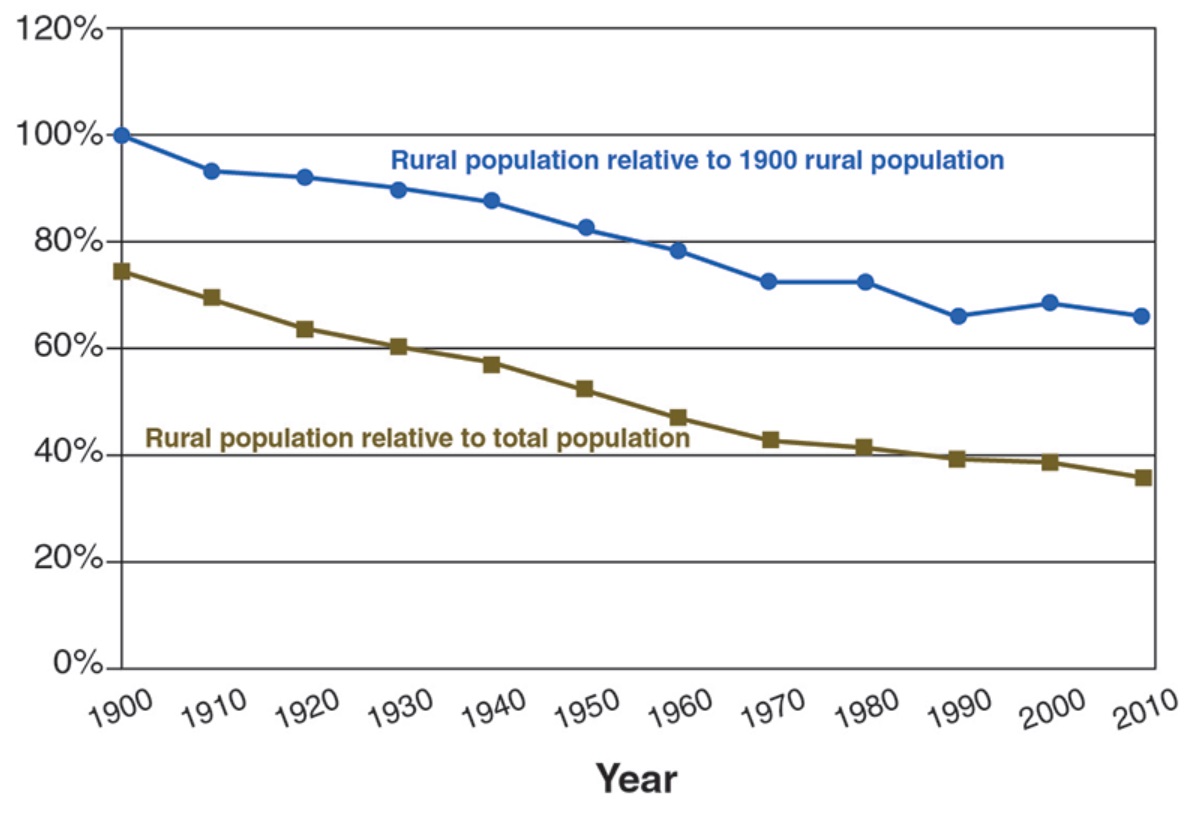
“Numerous policies have been proposed to stem the decline of Iowa’s rural population,” wrote three Iowa State University economists, Georgeanne Artz, Younjun Kim and Peter F. Orazem, in a 2014 article in the journal “Agricultural Policy Review” entitled, “Can the Trend of Rural Population Decline Be Reversed?”
“Over the past decade,” the economists said, “these have included fostering rural entrepreneurship, promoting rural manufacturing, beautifying town centers and expanding rural broadband. While any of these might have some positive impacts, it is difficult to believe that they will reverse the century-long rural-to-urban population shift.”
But these professors of the dismal science saw a silver lining for Iowa in the way its small towns are spinkled across the state. They noted “the distribution of metropolitan areas in Iowa places about 90 percent of the population within a 45-minute commute of an urban labor market. As a result, almost three-fourths of residents of towns with populations under 2,500 commute to another town for work. Iowa’s small towns are surviving compared to those in Nebraska because small-town Iowans can access the higher urban wages while taking advantage of the lower cost of living available in small towns.”
This model of a labor force communting from its rural bedroom communities to its urban jobs raises problems of its own for small towns even if the towns’ survival depends paradoxically on the cities that seem also to be sapping them.
“Iowa’s rural and urban politicians are often at odds regarding economic development strategies,” the ISU economists said, “with rural politicians viewing urban employment growth as a threat. In fact, the growth of Iowa’s urban job centers has meant the survival of small Iowa towns more than any programs aimed at creating jobs in rural towns.”
Iowans interested in participating on an Empower Rural Iowa Initiative task force should apply online by Aug. 1. The initiative seeks diverse members who share an interest in finding concrete solutions to the unique challenges and opportunities that exist in rural Iowa.





